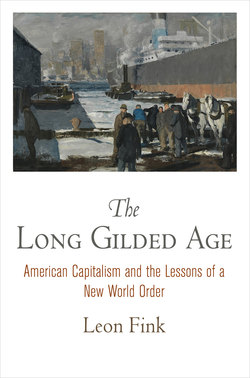The Long Gilded Age

Реклама. ООО «ЛитРес», ИНН: 7719571260.
Оглавление
Leon Fink. The Long Gilded Age
Отрывок из книги
The Long Gilded Age
Series editors
.....
Finally, in a brief Epilogue, I make an effort to connect the Long Gilded Age to the American labor history that succeeded it. The Long Gilded Age’s subtitle speaks of the “lessons” of its time period. By that word, I mean to include at once the morals drawn, for good or ill, by Gilded Age contemporaries, and those that, looking back, we learn by considering events over a longer stretch of time. Where, in particular, do we see points of continuity, or perhaps even a second chance to come at old problems with new insights? To be sure, we live in a very different world from the one described in these essays. Yet, the urge to understand, and by understanding renew, continues. What, then besides world wars, devastating depressions, and a loss of confidence separate the promise of their times from our own?
What saved the Jews the opprobrium visited on the Chinese was the deflection of the discourse of immigrant “degeneracy” to one of environmental degradation. In the case of the Russian Jews, a host of agents—German Jews, middle-class public-health and reform advocates, as well as the contemporary labor movement—effectively identified industrial capitalism (as exemplified by the sweatshop), not race, as the culprit. In the ensuing discourse of factory inspection, as championed by the International Ladies’ Garment Workers’ Union, the “modern” factory was contrasted to the sweatshop as a means to improve sanitation, eliminate degrading homework, and lift the overall cultural profile of the immigrant community. In the factory, or “model shop” as articulated by the industry’s union-management Joint Board of Sanitary Control after 1910, “the boss remained, but healthy male workers earned a family wage, while enjoying a host of comforts and conveniences… . Where the sweatshop enfeebled, the model shop cured.” Restore the working-class family’s “independence”—as effected by the male provider—the argument suggested, and the wolf of unfreedom could be kept at the door. It is worth noting that the “sweatshop debate” helped to cut short a more systemic discussion of the iniquities of free labor and the free contract. With proper control—in particular a place for unions in the negotiation of wages and conditions—workers, it seemed, could transform the sweatshop from Exhibit A of capitalistic iniquity into “a correctable problem of poor management.” 34
.....